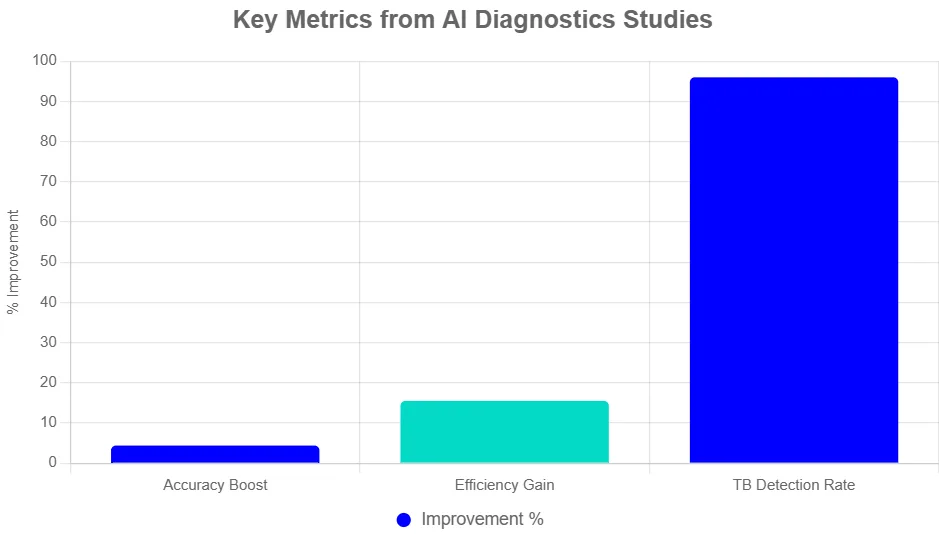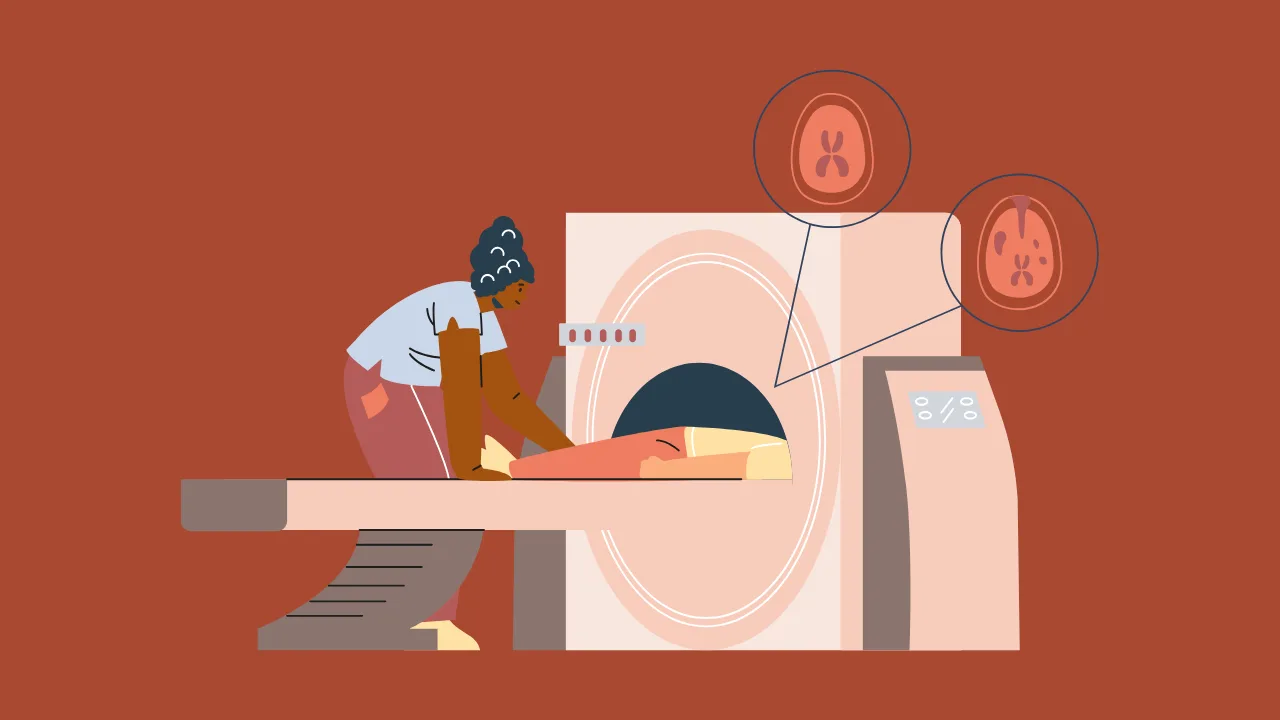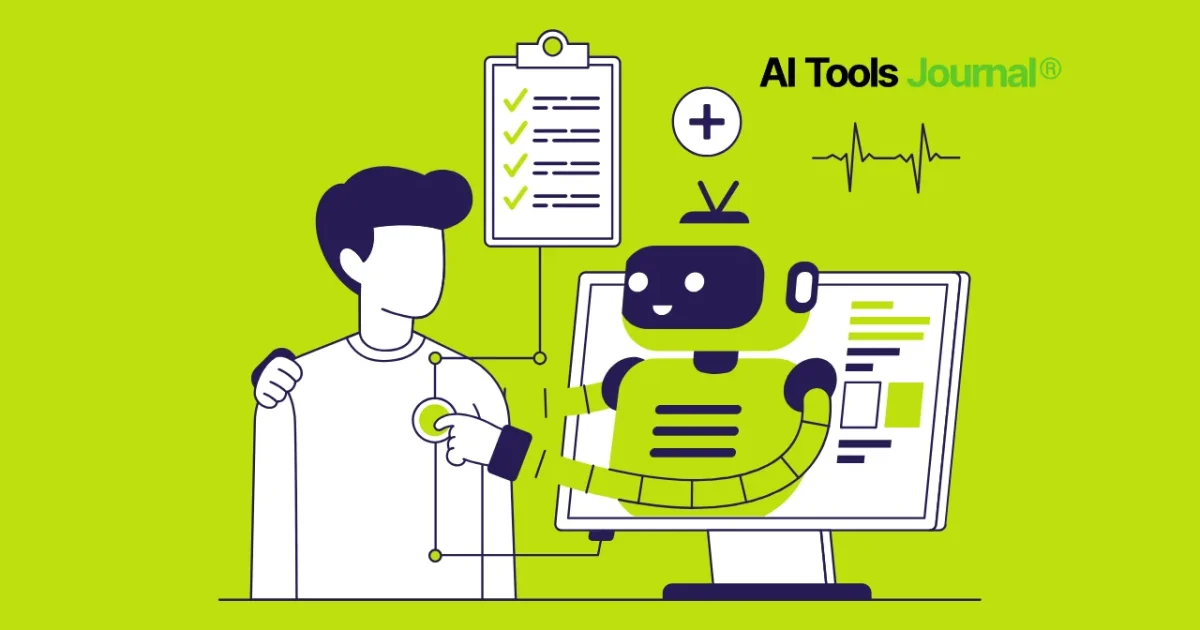Are you juggling skyrocketing costs while trying to deliver top-notch care?. Patients wait too long for answers, errors slip through, and budgets stretch thin. It’s tough. But here’s the good news—AI diagnostics steps in like a smart sidekick, boosting quality without breaking the bank.
So, what’s the bottom line? These tools use artificial intelligence diagnostic perks to spot issues quicker and smarter. In this guide, we’ll dive into the benefits of AI diagnostics that can ease your daily grind.
Benefit 1: Faster Diagnosis – Time Is Lives Saved
Think of AI as a turbo-charged detective. It sifts through scans and data in seconds, not hours. This means quicker calls on treatments.
Take a big city hospital. Doctors used an AI tool for stroke alerts. Before, spotting a clot took about 60 minutes. Now? Just 5 minutes. That speed let teams act fast, saving brain function for more patients.
“AI can help us learn new approaches to treatment and diagnostic testing for some cases that can reduce uncertainty in medicine.” – Dr. Regina Barzilay, MIT professor and AI researcher
A study in JAMA backs this up. Clinicians using AI saw diagnostic speed jump, with efficiency up 15.5% in radiograph reports.
Benefit 2: AI Medical Accuracy – Spotting What Eyes Miss
AI acts like an eagle-eyed spotter. It crunches huge datasets to flag tiny clues humans might overlook. Result? Fewer wrong calls.
In a rural clinic chain, AI scanned X-rays for pneumonia. It caught cases missed by busy docs, boosting right diagnoses by 10%. One patient got antibiotics same-day instead of waiting a week.
This ties into AI healthcare improvements. A Lancet review shows AI models hit 96% accuracy for tuberculosis resistance.
“Artificial intelligence is not a substitute for human intelligence; it is a tool to amplify human creativity and ingenuity.” – Fei-Fei Li, AI pioneer and Stanford professor
Benefit 3: Cost-Effective Diagnostics – Smarter Spending
AI cuts waste like a budget wizard. It streamlines tests, so you order fewer repeats. That frees cash for what matters—patient care.
At a mid-size community hospital, AI triaged chest scans. It slashed unnecessary follow-ups by 20%, saving $50,000 yearly on imaging. Staff focused on complex cases instead.
Here’s the deal: These savings add up fast. FDA notes AI learns from real use, dropping long-term costs.
“AI is improving diagnostics, automating administrative tasks, and enhancing personalized treatment plans.” – Dr. Eric Topol, cardiologist and AI health expert
Benefit 4: Early Disease Detection – Catching It Before It Spreads
Imagine AI as an early warning radar. It scans for subtle signs of trouble, like cancer hints in routine checks. Early catches mean easier fixes.
A network of eye clinics rolled out AI for diabetic retinopathy. It flagged high-risk eyes during checkups, leading to laser treatments that prevented blindness in 30% more cases.
This shines in artificial intelligence diagnostic perks. World Economic Forum reports AI detects diseases pre-symptoms.
Benefit 5: Reduced Medical Errors and Improved Patient Outcomes
AI double-checks like a trusty co-pilot. It flags odd patterns, slashing slip-ups that harm folks.
In an emergency department, AI predicted sepsis from vitals. It alerted nurses early, dropping mortality by 12% in flagged patients. Families got their loved ones home sooner.
JAMA found AI lifts overall accuracy by 4.4%.
“We think that AI is poised to transform medicine, delivering new, assistive technologies that will empower doctors to better serve their patients.” – Google Health team
Quick Comparison: Weighing the Benefits of AI Diagnostics
This table helps you see how each benefit stacks up. It focuses on your goal: balancing care quality with costs.
| Benefit | Key Perk | Best For | Cost Impact | ROI Example | Cons/Issues |
|---|---|---|---|---|---|
| Faster Diagnosis | Cuts wait from hours to minutes | ERs with high volume | 15-20% less overtime | $100K saved/year on staffing | Needs fast internet |
| AI Medical Accuracy | Boosts hit rate by 4-10% | Radiology depts | Fewer repeat tests | 4.4% accuracy gain = $75K | Training curve for staff |
| Cost-Effective Diagnostics | Trims redundant scans | Budget-tight clinics | 20% imaging savings | $50K annual cut | Upfront software fee |
| Early Disease Detection | Flags risks pre-symptoms | Preventive care units | Lower treatment costs | 30% fewer advanced cases | Data privacy rules |
| Reduced Medical Errors | Alerts on patterns | ICUs | 12% mortality drop | $200K in avoided lawsuits | Over-reliance risk |
Your Step-by-Step Guide to Adopting AI Diagnostics
Ready to dip in? Follow these easy steps. It’s like building a Lego set—one piece at a time.
- Check Your Setup: Look at your current tools. Ask: Where do delays or errors pop up most? Pick one spot, like scans.
- Pick a Tool: Hunt FDA-approved options, like Viz.ai for strokes. Read reviews on sites like HIMSS.
- Train Your Team: Run short workshops. Show how AI flags issues, not replaces jobs. Aim for 2-hour sessions.
- Test Small: Pilot in one department for 3 months. Track time saved and errors cut.
- Scale and Review: Roll out wide if it works. Check metrics quarterly. Tweak as needed.
Think of it this way: Start small, grow big. You’ll see wins fast.
Here’s a quick code example to demo a simple AI diagnostic check. Imagine using Python to predict risk from patient data—like a basic fever checker. (This uses libraries you might have in a clinic system.)
import numpy as np
from sklearn.linear_model import LogisticRegression # Simple ML model
# Sample data: Age, fever temp, cough score (0-10)
X = np.array([[25, 99, 2], [45, 102, 8], [60, 98, 1], [30, 103, 9]]) # Training inputs
y = np.array([0, 1, 0, 1]) # 0=low risk, 1=high risk (flu-like)
# Train model
model = LogisticRegression()
model.fit(X, y)
# New patient: 35 yo, 101 fever, cough 7
new_patient = np.array([[35, 101, 7]])
risk = model.predict(new_patient)
print("Risk level:", "High" if risk[0] == 1 else "Low")
# Output: Risk level: High – Alert doc!
This snippet shows how AI crunches numbers for a quick call. Tweak it for your needs.

Is Your Clinic Ready? Quick Self-Assessment Checklist
Download this as a PDF (print and check off!). Rate yes/no for each.
- Do we have slow spots in diagnosis? [ ]
- Is staff trained on digital tools? [ ]
- Budget for $5K-10K startup? [ ]
- Data secure per HIPAA? [ ]
- Plan to measure outcomes? [ ]
Score 4+ yes? You’re primed! Share with your team.
Wrapping Up: Embrace AI Healthcare Improvements Today
AI diagnostics isn’t just hype—it’s your ticket to better care at lower costs. From faster diagnosis to reduced medical errors, these perks deliver real wins in 2025. Start small, watch outcomes soar.
Got questions? Drop a comment below with your clinic story. For more, check our post “Top AI Tools for Hospital Efficiency” on aitooljournal.com.
Frequently Asked Questions (FAQs)
What Are the Main Artificial Intelligence Diagnostic Perks for Small Clinics?
They cut costs by 20% on tests and speed up reads. Perfect for tight budgets.
How Does AI Boost Improved Patient Outcomes?
By catching issues early, it lowers complication rates by up to 12%.
Is AI Diagnostics Safe and Accurate in 2025?
Yes—studies show 96% hits on key tests, with FDA oversight.
What’s the ROI on Cost-Effective Diagnostics?
Expect $50K+ savings yearly, per hospital pilots.
Can AI Help with Early Disease Detection Right Now?
Absolutely. Tools like eye scanners flag risks in routine visits.




